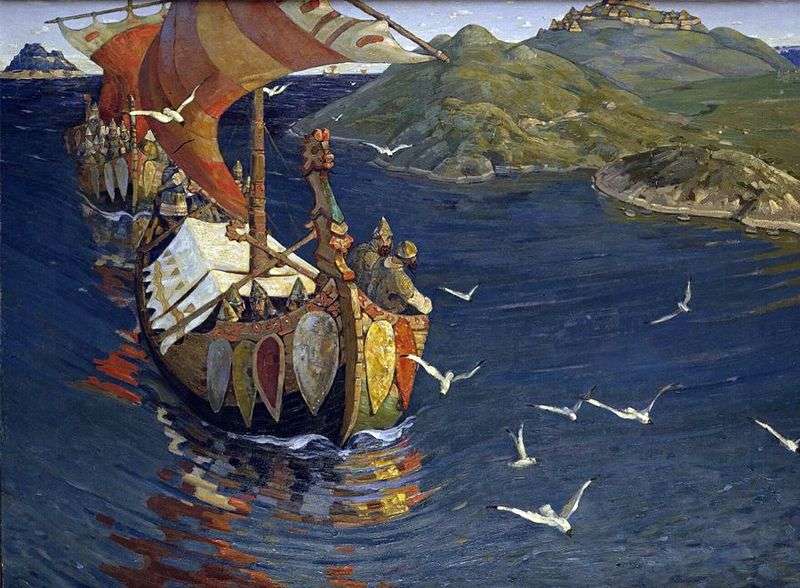
Native history captures Nicholas Roerich from the very first days of study at the Academy of Arts and St. Petersburg University, where he simultaneously entered in 1893. Therefore, many of his academic works are devoted to historical events.
Nicholas Konstantinovich was very interested in the most important turning point in the history of the Fatherland – the formation of the Old Russian state, and he thought of a series of paintings “Beginning of Russia. Slavs”.
In the autumn of 1900, Nikolai Konstantinovich went to study in Paris and in 1901 created the painting Overseas Guests. As is known from the Chronicles, the quarreling tribes invited the Varangian princes to establish peace and quiet. “Let’s look for a prince who would own us and judge by right. And they went overseas to the Varangians, to Russia…” – said in the Tale of Bygone Years. After addressing the Varangians, in the Slavic lands “Rurik arrived with the brothers Sineus and Truvor”
In the upper right corner of the picture, behind a high mound – the grave of the Wise Oleg – Roerich wrote a mysterious settlement on a hill – a fortress. Archaeologist E. A. Ryabinin discovered on this site, known as Lyubshi, the oldest Slavic stone-earthen fortress on the territory of Eastern Europe, dating from the middle of the VIII century. Under the stone Lyubshansky fortress was a wooden last third of the seventh century. Against the background of Lyubsha, Roerich and depicted his “Overseas Guests”. “
The painting “Overseas Guests” differs from the previous paintings in a rich color palette. New searches for imagery are particularly evident in this picture, presenting an extraordinary coloristic gift from the artist. A picturesque poem in jubilant colors resurrects the era of discoveries of unknown countries.
On the blue sea among the green islands floating fabulous boat Vikings. The swift wind fills the multicolor sails, white gulls rush towards us with a cry. Working on the picture, Roerich in a peculiar way uses the methods of folk art, achieves great decorativeness, sonority of colors, creates a cheerful, festive work.
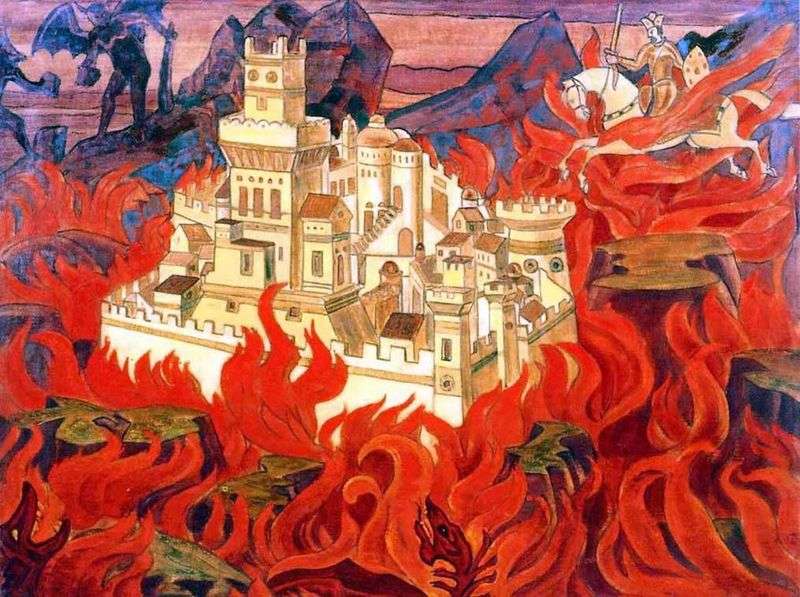 Purest Hail by Angers to Enemies – Nicholas Roerich
Purest Hail by Angers to Enemies – Nicholas Roerich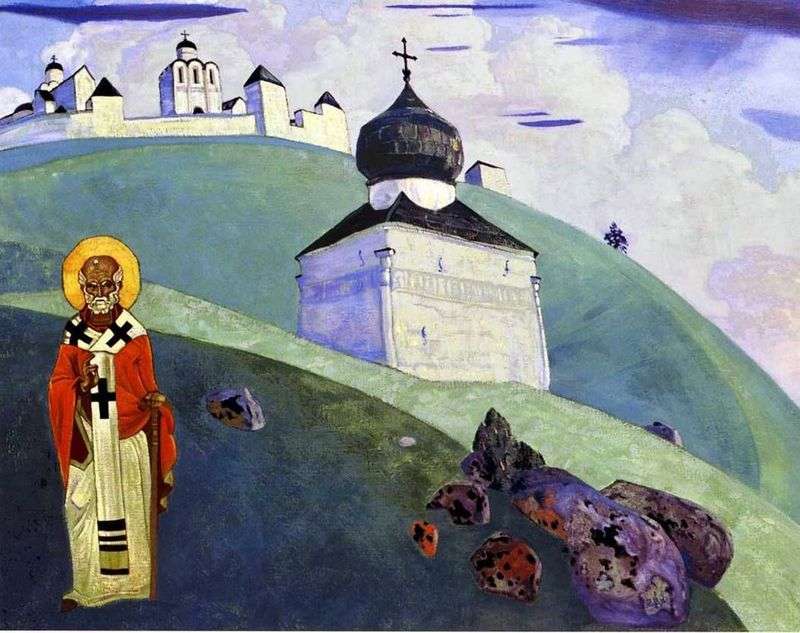 Saint Nicholas by Nicholas Roerich
Saint Nicholas by Nicholas Roerich Heavenly battle by Nicholas Roerich
Heavenly battle by Nicholas Roerich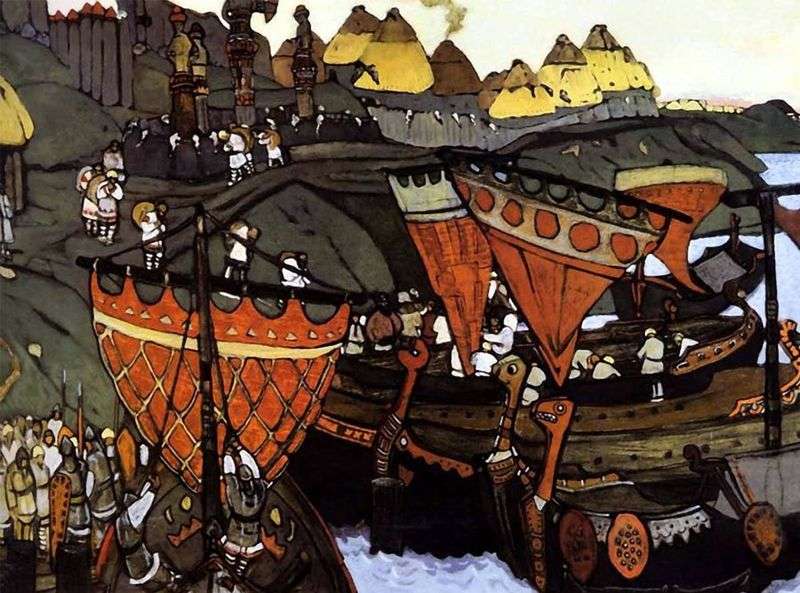 Slavs on the Dnieper by Nicholas Roerich
Slavs on the Dnieper by Nicholas Roerich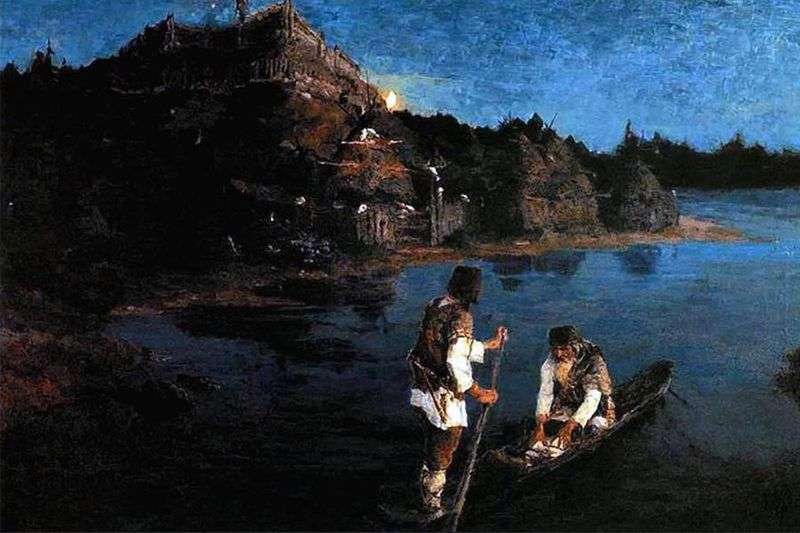 Messenger. The clan was born on the clan by Nicholas Roerich
Messenger. The clan was born on the clan by Nicholas Roerich Saint Sergius of Radonezh by Nicholas Roerich
Saint Sergius of Radonezh by Nicholas Roerich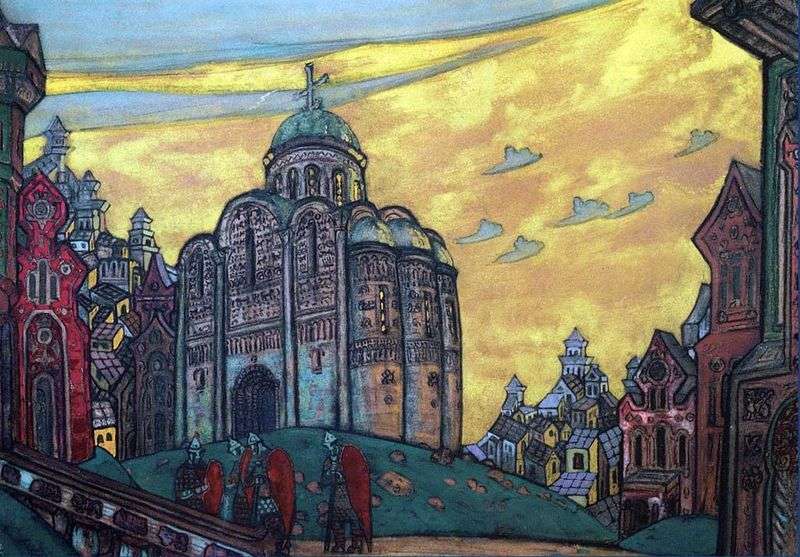 Putivl by Nicholas Roerich
Putivl by Nicholas Roerich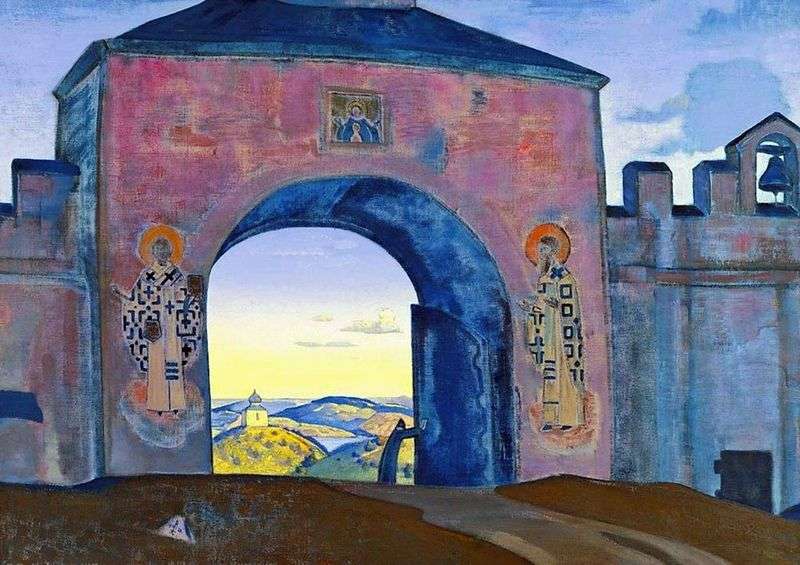 And open the gate by Nicholas Roerich
And open the gate by Nicholas Roerich